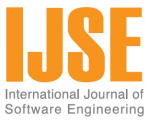Vol 5 No.2
Papers
ABSTRACT Modernization of legacy systems requires the existence of technical frameworks for information integration and tool interoperability that allow managing new platform technologies, design techniques and processes. MDA (Model Driven Architecture), adopted by the OMG (Object Management Group), is aligned with this requirement. Reverse engineering techniques play a crucial role in system modernization. In light of these issues, this article describes a framework to reverse engineering MDA models from object oriented code. This framework distinguishes three different abstraction levels linked to models, metamodels and formal specifications. At model level, transformations are based on static and dynamic analysis. At metamodel level, transformations are specified as OCL (Object Constraint Language) contracts between MOF (Meta Object Facility) metamodels which control the consistency of these transformations. The level of formal specification includes algebraic specifications of MOF metamodels and metamodel-based transformations. This article shows how to reverse engineering use case diagrams from Java code in the MDA context focusing on transformations at model and metamodel levels. We validate our approach by using Eclipse Modeling Framework, Ecore metamodels and ATL (Atlas Transformation Language).
ABSTRACT Regression testing analyzes whether the maintenance of the software has adversely affected its normal functioning. Regression testing is generally performed under the strict time constraints. Due to limited time budget, it is not possible to test the software with all available test cases. Thus, the reordering of the test cases, on the basis of their effectiveness, is always needed. A test prioritization technique, which prioritizes the test cases on the basis of their Time -Fault Ratio (TFR), has been proposed in this paper. The technique tends to maximize the fault detection as the faults are exposed in the ascending order of their detection times. The proposed technique may be used at any stage of software development.
ABSTRACT A few organizations are working with the hand skill development for the disabled people in Bangladesh. Due to their limited scopes and facilities, they cannot cover the mass population of this country. Telerehabilitation can be introduced in this situation. The interaction between the therapist and the disabled people can take place via Telerehabilitation through video conferencing. So, our work aimed to design and implement such a system through User-Centred Design approach of Interaction design framework and a mock-up has been presented for the users of the system. At last a cognitive walkthrough analysis will be done to get the final functional activities of interaction as the result of the analysis.
ABSTRACT The increasing availability of sophisticated mobile appliances, also supporting cost-effective proximity communication technologies, boosts the development of smart environments. This can change the user experience, also enabling new interaction models. However, to cope with additional complexities and to enhance the set of available services, a proper software framework is needed. Specific requirements are: i) the delivery of personalized contents; ii) the easy management and adaptation of multimedia objects to precise classes of devices; iii) the support of network intensive applications, e.g., those using video streaming. In this perspective, the paper presents a prototypal software framework to bring such features in museums. The main contributions concern the methodologies for creating and delivering ad-hoc contents in a simple and scalable way, as well as the integration of standard solutions to maintain the deployment simple and competitive. Besides, owing to the core role of the network, a preliminary performance evaluation of the data delivery subsystem is presented.
ABSTRACT There are over 2.2 billion Internet users around the world as of December 31 2011, according to the Internet World Stats (IWS) [1]. Online service is an important driving force behind many of today’s Web 2.0 and cloud computing applications. For security and privacy concerns, authentication is utilized by all online services that involve online transactions and restricted information access. Authentication is the process of verifying a user’s credentials when they are requesting services from any secure system. The most commonly form of authentication is the single-factor authentication, which only requires one factor for the user to log into the system. In this case, the username and password together act as a single-factor. A more secure technique is the multi-factor authentication, which requires more than one factor to gain access into a particular system. As the multi-factor authentication getting matured in its currently available methods, hostile actions have been observed against some of the multi-factor authentication techniques. In this paper, we propose a RFID Factor Authentication Application (RFAA); an enhanced technique from SofToken [2] that acts as an improved technique for two-factor authentication. The RFAA not only sustains the next level of security but also is proven to prevent most of security breaches. This RFID enhancement on SofToken is designed especially for computer system access using two-factor authentication to improve the security measure.
